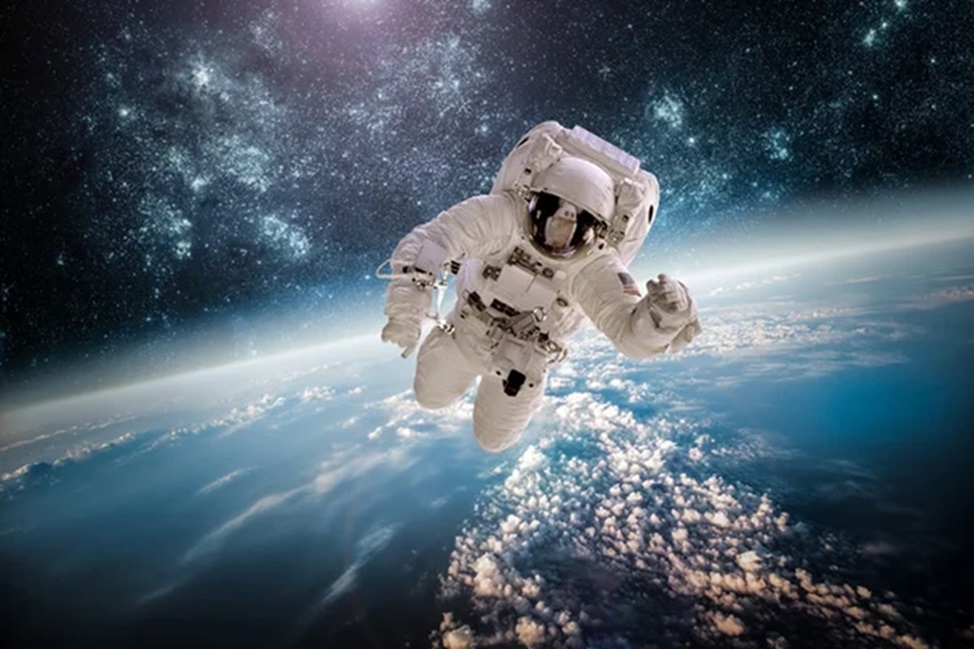
# U.S. Naval Research Laboratory Creates Robotic System to Maintain Satellites at 22,000 Miles High
### Summary:
The U.S. Naval Research Laboratory (NRL) has effectively finalized the creation of an advanced robotic system aimed at maintaining satellites situated 22,000 miles from Earth. This groundbreaking technology has the potential to transform space operations by facilitating in-orbit repairs and enhancements, possibly conserving billions in replacement expenses while greatly prolonging satellite functionality.
—
### **Naval Research Laboratory Announcement, October 8, 2024 | *Reading time: 4 minutes***
For the first time, satellites may soon undergo repairs and enhancements akin to those routinely provided to military vehicles like aircraft and tanks. This significant advancement in space technology is enabled by a robotic system crafted by the U.S. Naval Research Laboratory (NRL). Following numerous years of development and exhaustive testing, this innovative robotic system ignites optimism for the upkeep of space infrastructure, which has historically lacked repair alternatives post-launch.
### **A Mechanic’s Workshop in Space**
NRL’s pioneering initiative, the **Robotic Servicing of Geosynchronous Satellites (RSGS)** system, targets a major issue: the impossibility of servicing or upgrading satellites once they have been deployed into orbit. Satellites represent some of the most costly equipment in operation today, especially those in **geosynchronous orbit**, which are vital to governmental, military, and commercial communications.
“While the military routinely repairs and upgrades its aircraft, tanks, and ships utilizing the latest technology, satellites are abandoned once in orbit,” stated Glen Henshaw, a senior scientist at NRL. “Satellites are the only critical assets we purchase that cannot be maintained, repaired, or upgraded after deployment. This situation carries significant financial ramifications for taxpayers and mission strategists.”
By positioning RSGS in geosynchronous orbit—which permits the satellite to align with Earth’s rotation and remain above a specific location—the U.S. could acquire a mechanism not just to prolong satellite life but also to execute essential repairs. Consequently, this could postpone the necessity for costly replacement satellites, generating annual savings in the billions.
—
### **Testing the Robotic System for Space Contexts**
Creating a robotic system capable of operating within the severe conditions of outer space demands thorough testing. RSGS has gone through a variety of robust **thermal vacuum tests**, which replicate the extreme temperature and pressure environments found in space. During these evaluations, engineers evaluated all components of the system, including its avionics (the satellite’s electronic systems), visual cameras, inspection lights, and two agile robotic arms. These robotic arms are intended to perform an array of in-orbit tasks similar to those carried out by mechanics in their workshops on Earth, such as upgrading hardware and executing problem-solving repairs.
NRL’s **Team RSGS** has dedicated nearly a decade to achieving this aim. William Vincent, the program manager of RSGS, expressed his pride in this accomplishment, saying, “Our team has been devoted to reaching this objective for almost ten years. Achieving this groundbreaking robotic servicing technology is a significant milestone.”
The system is projected to be launched into orbit in 2026, with RSGS functioning as a pioneering mechanic workshop in space, utilizing robotic arms to carry out intricate tasks never before achievable on such platforms.
—
### **How Might RSGS Alter Space Operations?**
The ramifications of this technology are extensive. For decades, satellites have been dispatched into space with the premise that their parts, once compromised, were irreplaceable. Should a malfunction arise, an expensive new device had to be constructed and launched.
The emergence of **RSGS** could alter that framework, potentially lengthening the operational life of satellites and minimizing the need for new satellite launches. The capability to perform software and hardware upgrades in orbit could also allow older satellites to leverage new technologies or adjust their functionalities to accommodate evolving demands.
Moreover, beyond communication satellites, this same principle could extend to a broad spectrum of future space missions, including scientific spacecraft and military reconnaissance assets. The ability to service and sustain these distant satellites is expected to become increasingly crucial for addressing national security and civil space objectives.
—
### **Glossary of Terms**
* **Geosynchronous Orbit**: A circular orbit roughly 22,000 miles above Earth, where a satellite travels at a velocity that corresponds with the rotation of the planet, keeping it over the same point on Earth’s surface.
* **Thermal Vacuum Testing**: A process that mimics the extreme conditions of outer space, encompassing temperature ranges and near-zero atmospheric pressure, to ensure that hardware and systems operate reliably in space.
* **Avionics**: The electronic systems utilized for the control and monitoring of spacecraft, including communication, navigation, and sensor data processing.